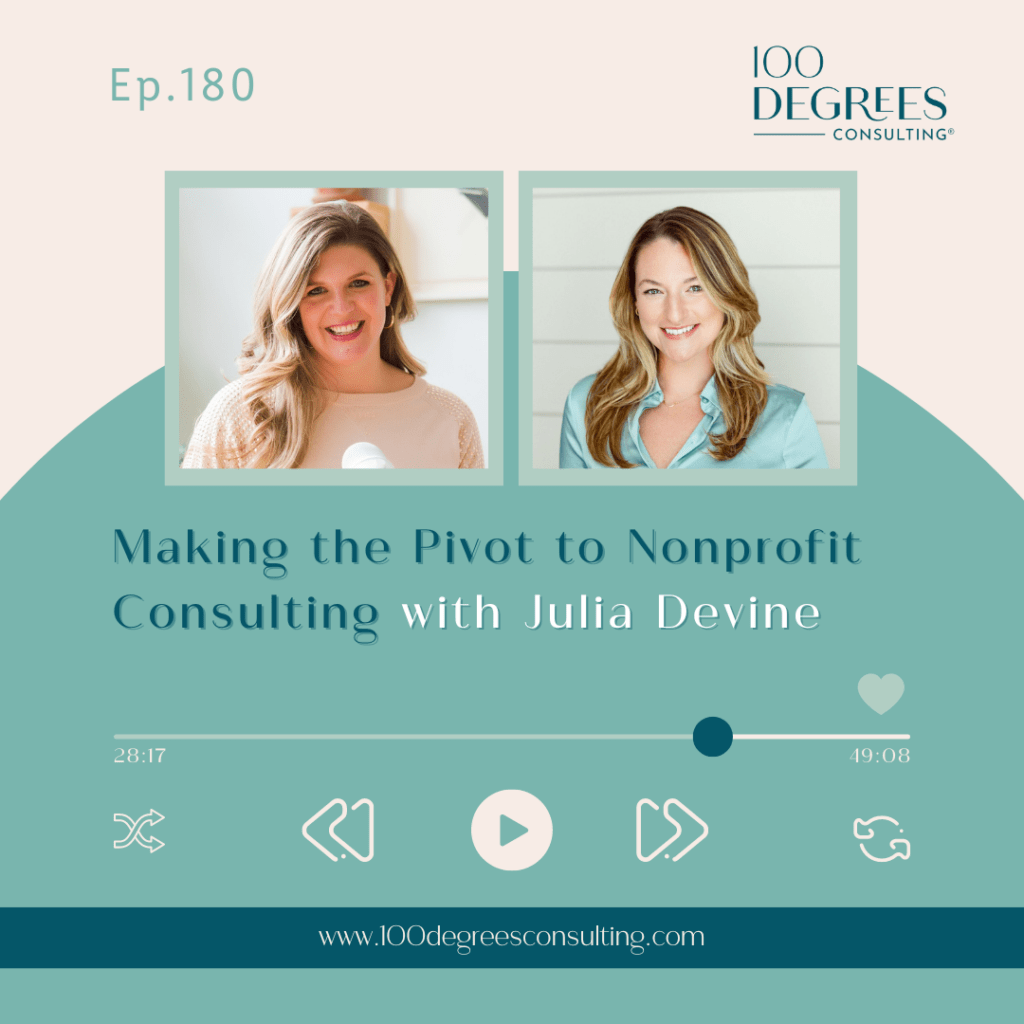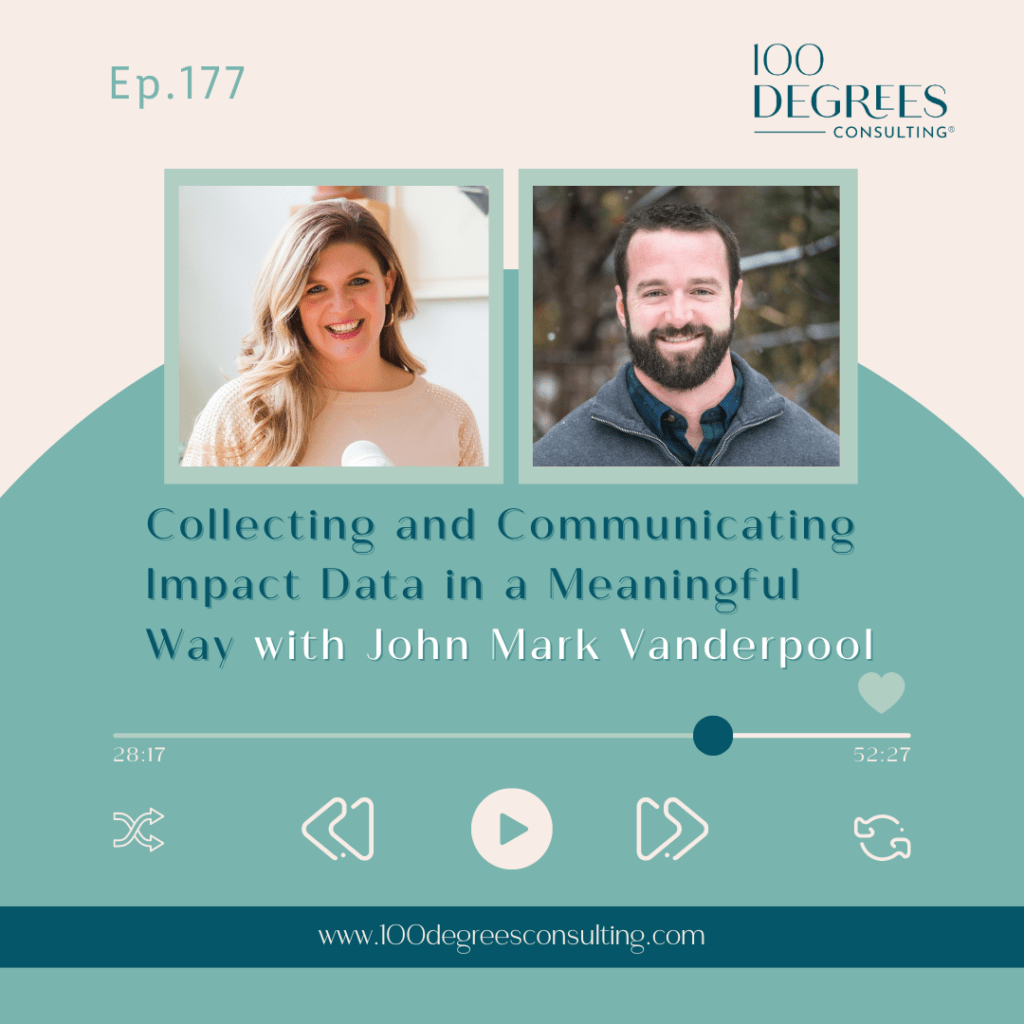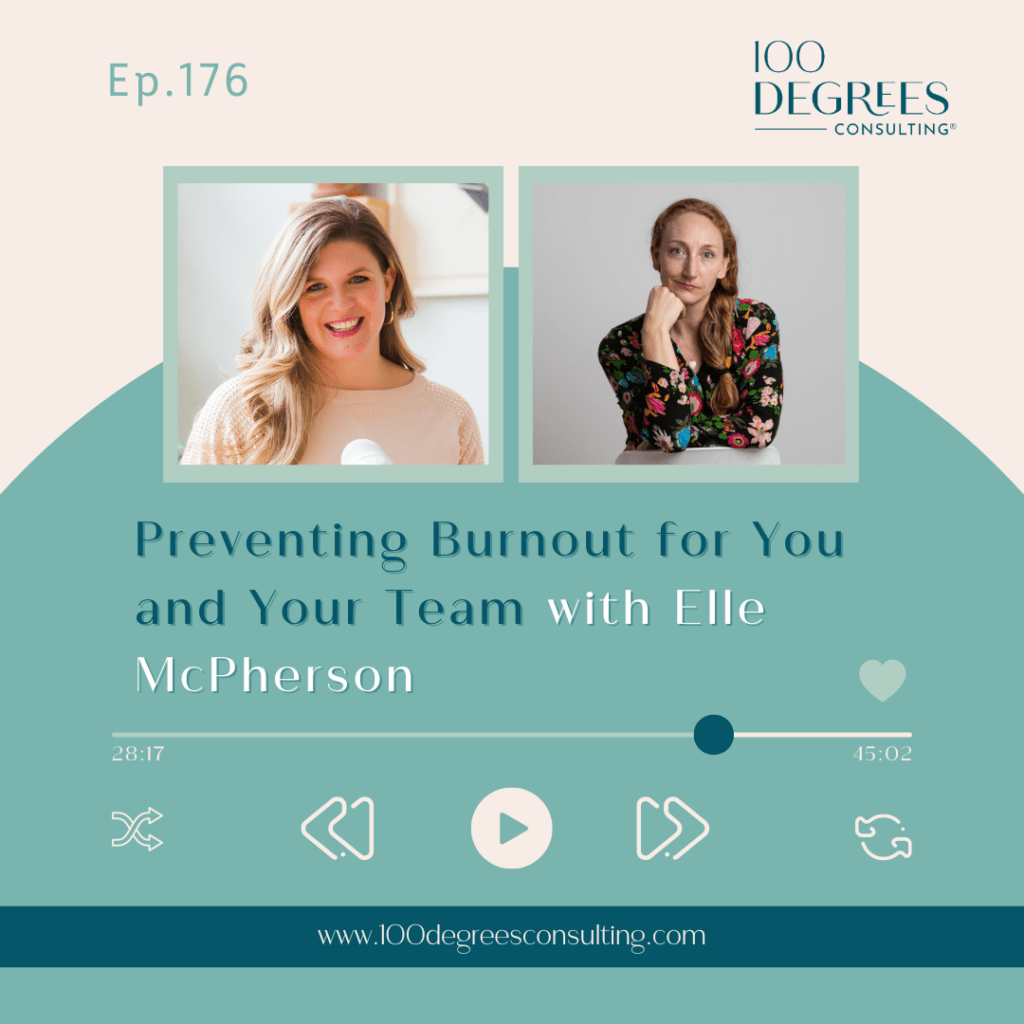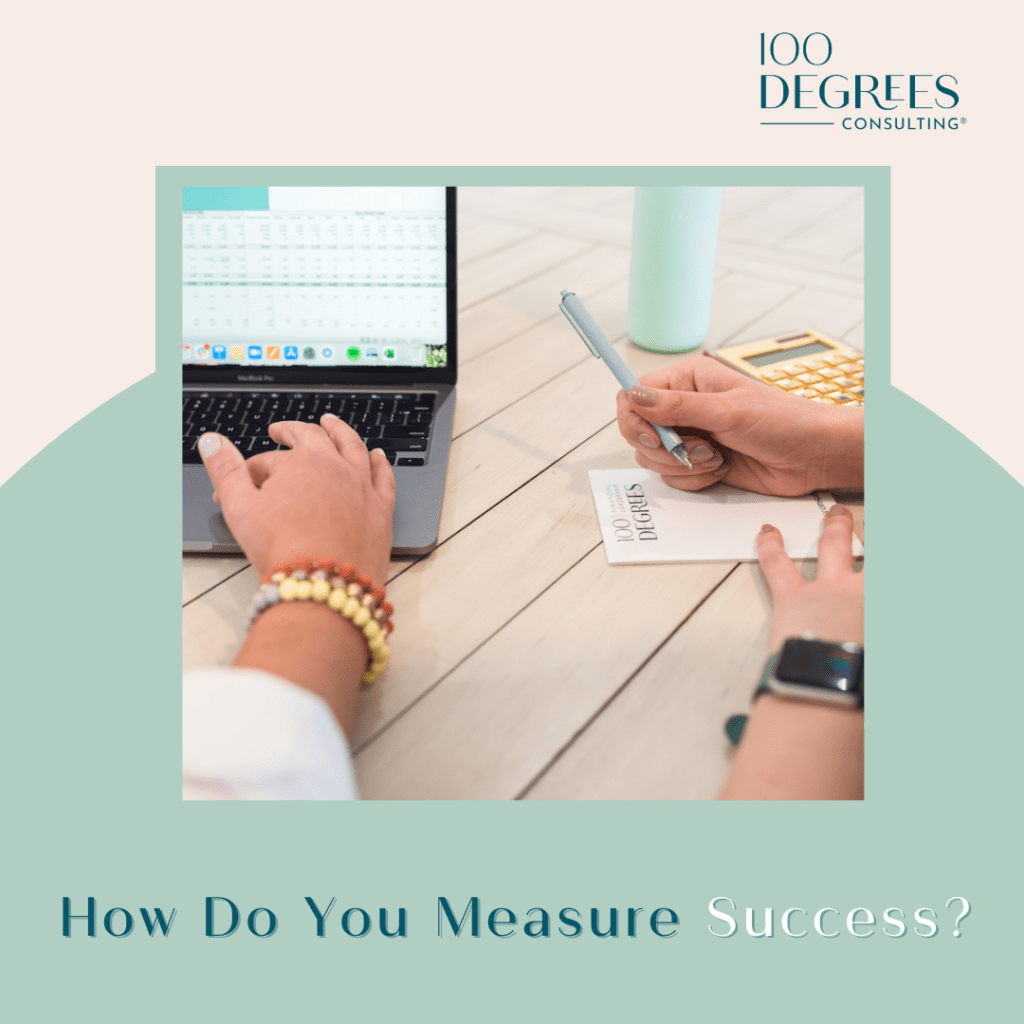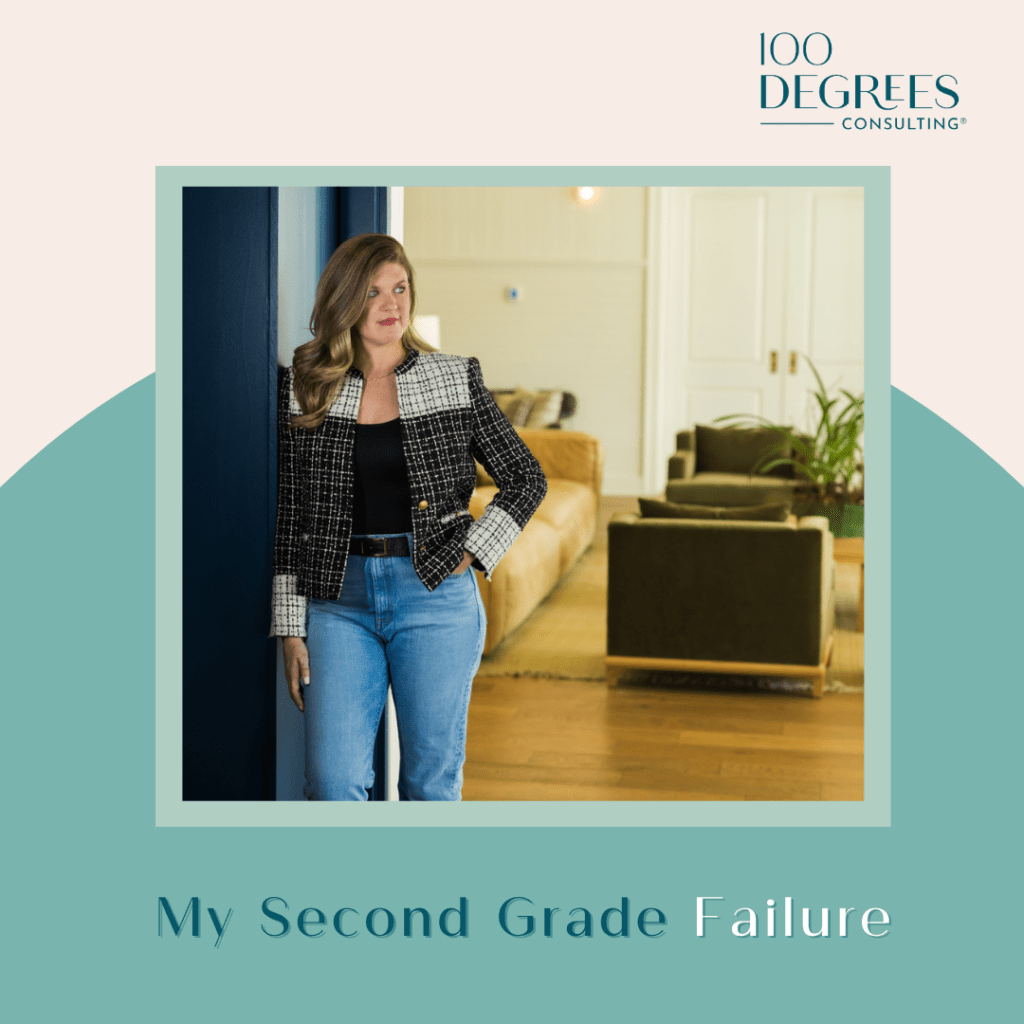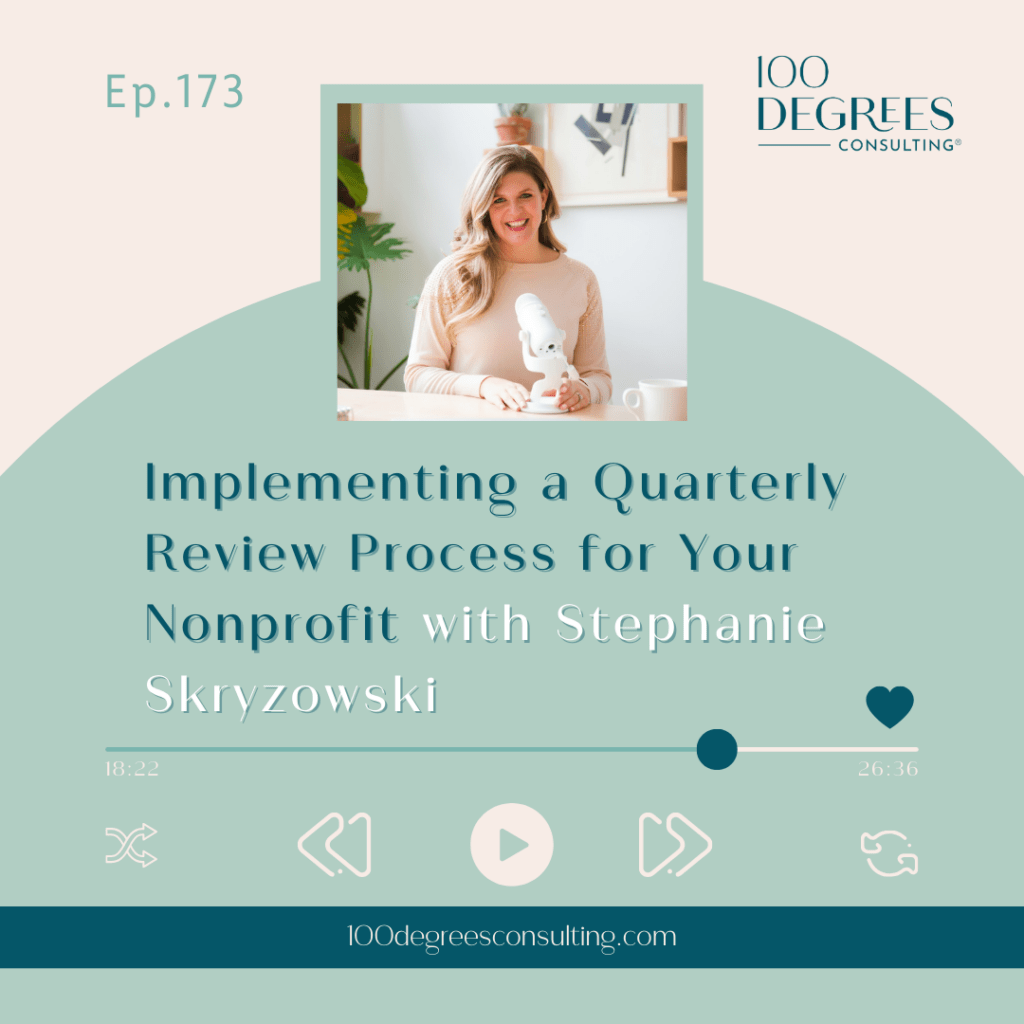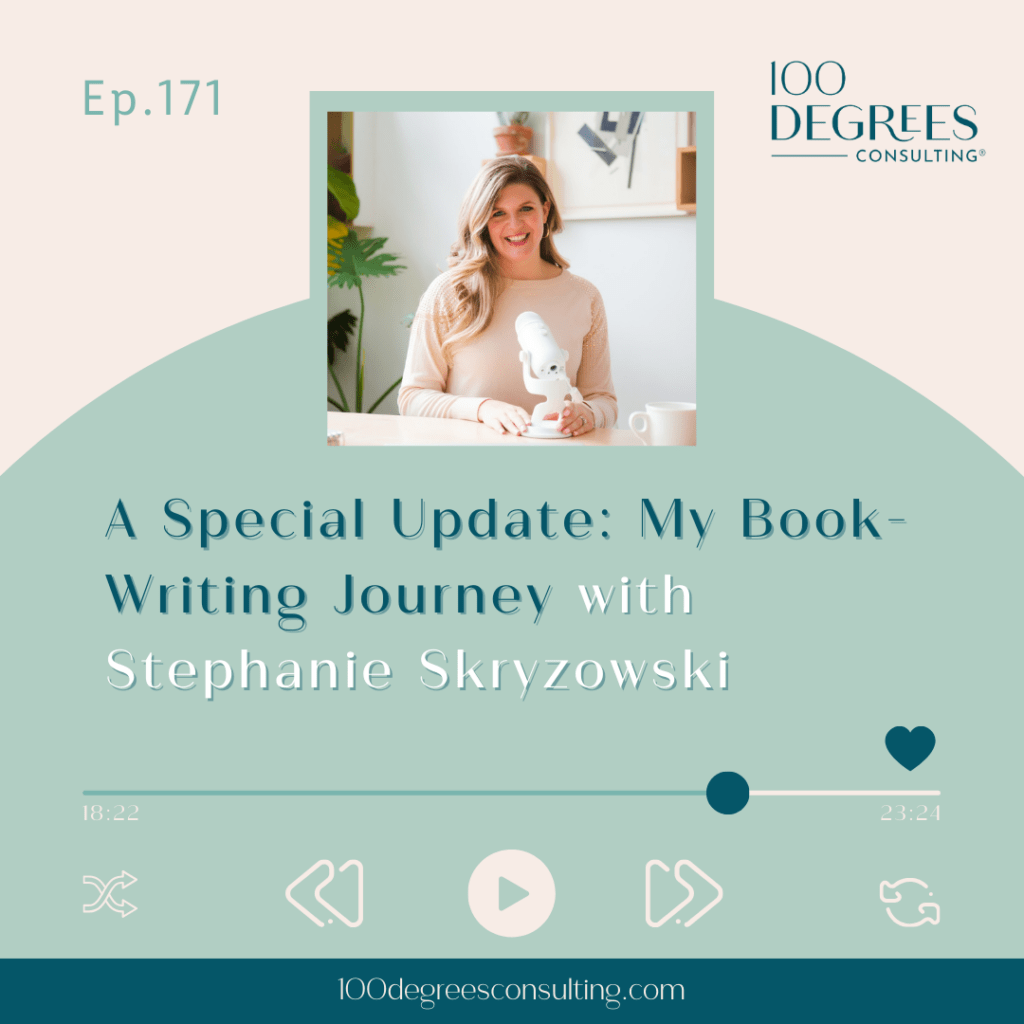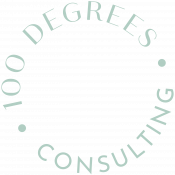Transcript for Episode 6 Balancing Motherhood and Scaling a Startup with Morgan Smith
Stephanie Skryzowski.: Welcome to the 100 Degrees of Entrepreneurship Podcast, the show for purpose-driven entrepreneurs who want to get inspired to step outside of your comfort zone, expand it to your purpose and grow your business in a big way. I’m your host, Stephanie Skryzowski, a globetrotting CFO whose mission is to empower leaders to better understand their numbers, to grow their impact and their income. Let’s dive in.
Hello. Hello. Welcome back to the 100 Degrees of Entrepreneurship Podcast. I’m your host, Stephanie Skryzowski, and today I have with me Morgan Smith. Morgan is the founder and CEO of Minnow. She is a mom of three. She’s an entrepreneur with a background in premium product marketing. After working in New York and LA, she returned to her hometown of Laguna Beach, California to found the brand Minnow. We talked today all about her journey from working in corporate to founding this amazing children’s swim company, and really feeling okay with being a beginner and figuring things out along the way.
We also talk about balancing motherhood and entrepreneurship and the challenges that come along with that, and really how Morgan has been able to find the balance that really works for her and her family and her company. This was just such a great conversation that I think anyone, any mom, especially who is running a business and raising kids is really going to resonate very strongly with. We had an awesome conversation and I am so excited for you to meet Morgan so Let’s dive in. Hey, everybody, welcome back to the 100 Degrees of Entrepreneurship Podcast. And I am so excited to be here today with Morgan Smith, the founder and CEO of Minnow, Morgan, welcome.
Morgan Smith: Hi, thanks so much for having me. I’m excited to be here.
Stephanie Skryz…: Yeah, I am just so excited to chat with you more about your business because as a client of ours, I’ve just watched your business grow so much over the past couple of years, and I know that you are just such a super driven person. And I’m just really excited to hear a little bit about your journey and about the behind the scenes of Minnow. So tell us about your business. First of all, tell us what Minnow is and does, and then how did you really get to where you are now with the business? Did you start out on this path or were there things that were put in place before you founded Minnow?
Morgan Smith: Yeah, that’s a great question. So prior to starting Minnow, I did work in the corporate world out of college. I worked in New York in fashion marketing, and I also worked in LA as well. And while I was at these companies, I always felt this sense of that I was going to do my own thing someday. Like this was an opportunity to learn and to grow, to gain experience, but I wasn’t really ever interested in a specific title or rising through that corporate ladder. I always knew inside that I would eventually do my own thing, I just didn’t know what it was yet. And for the longest time, that was the most frustrating part is just figuring out what the idea was.
I worked for Bugaboo as the digital marketing manager of North America before I started Minnow and before I had kids. And I remember meeting with the President in just a quarterly review and her asking me where I saw myself growing within the company. And I just remember honestly and transparently telling her that, “I see myself being an entrepreneur.” And she was like, “Good for you.” And very supportive and all the different places that I worked prior to Minnow were such a huge stepping stone in forming relationships, but just learning how to do things. And I’m grateful for every job that I’ve had. I’ve always been a worker. I worked since I was 14 and worked all through college and worked… it’s just always been part of my DNA. I’ve enjoyed that sense of having my own income and building and working at that. I joke with my parents sometimes that when I was a junior or senior in high school, I used to ditch fifth and sixth period to go work.
I know. I had this job and it was a commission job, it was a commission boutique job, but the commission was… it was 2006… oh, wait no. No I [inaudible 00:04:24], it was, let’s see. Let me do the math, it was further back than that. I was just really motivated, the [inaudible 00:04:32] was doing really well, I was making great commission for a senior in high school and I couldn’t give up that opportunity so I used to skip it and try to… Anyway this just always been part of me. I’ve always wanted to be a mom, but I knew that I at least wanted a project or something else to work on.
Stephanie Skryz…: I love that you used to skip school to go work because I legit did that in college. It was like a stupid job I worked at Victoria’s Secret in the mall selling lotions and perfumes, but I did the same thing. I was like, “I’ll just blow off a couple of college classes to go work.”
Morgan Smith: I know, it’s amazing.
Stephanie Skryz…: That’s really interesting that you always thought you would be an entrepreneur, but didn’t necessarily have the idea right away. And I find that sometimes it’s like, often we see the opposite, whereas people are like, “Oh yeah, I’m just going to stay in corporate or do what I’ve been doing.” But then the idea comes to them and they unexpectedly make a shift to entrepreneurship. So I think that that difference is really interesting. When you think about even childhood, were you that kid that was always selling something or coming up with a business idea? Was that you as a child too?
Morgan Smith: I don’t know if I was always selling something, but my parents and grandparents and everyone would say that they saw this path for me. I was always just a worker, I bought my own car in high school. My parents offered me a junker car and I wanted a nicer car, so I bought a nicer car for myself. I think I quickly learned, if I wanted my life to look a certain way, I was going to feel a certain way or to just have that freedom and flexibility to do the things that you wanted to do. That I was going to have to work really hard and that I was going to figure out a way to provide that.
Stephanie Skryz…: Yeah. So when Minnow came about, what did that look like? So were you working in corporate then? Or did you have kids then? Or, what was that transition like in the very beginning of Minnow?
Morgan Smith: Yeah. So when I had a baby, I went on maternity leave from Bugaboo and I asked them if I could work part-time from home and then part-time from the office, because we had moved down to Orange County and Bugaboo was in LA, it was an hour drive and just because of the commuting and stuff. And they felt like they couldn’t allow it at that time because it would open up the flood gates for other people. And so, basically they took me on as a consultant for them. So I still had Bugaboo as a client, but I became a 1099 instead of an employee. And then from there, people just starting to reach out to me. I did share my work online on social media, on my personal account, like always what I was up to and when I would be on work travel and just share some of my projects so people had an idea of what I did.
And so people began to reach out and it was specifically in the premium baby world and basically look for digital marketing help. And so I started to take on more clients and then I created a business where I was consulting for several baby brands. And while I was working closely with these entrepreneurs, I was just really inspired by them. And I felt a lot of just like, “I could do this.” I feel like I could really do it. And so it was really, the idea came me and my family, while I have this flexibility of this consulting job, I wanted to live in a different place, or live abroad, or do something different. So we did this home swap where for the summer, our family came and lived in our home in California and we actually moved to London and lived in London for the summer. So it was very much like the holiday [crosstalk 00:08:03]
Stephanie Skryz…: That’s so cool.
Morgan Smith: Yeah, it was a really cool experience. My husband actually couldn’t stay the whole time because of his job, because he had a job where he had to be at work, but he came for a couple of weeks and then I actually stayed out there with my son. And while we were there, we did this side trip to the Amalfi coast in Italy. And before leaving for this trip, I looked in London for a swim suit for my son and it was mid July and London has a huge children’s assortment, big offering, much more even in the States. Their department stores like Harrods and Selfridges entire floors are children’s, which here it’s like a little corner. And even just in Notting Hill, for example, it’s just boutique after boutique after boutique, that’s children’s boutiques. And I had the hardest time finding a swimsuit for my son and I remember thinking like this is so bizarre.
This is July. And I ended up finding one just on sale, just a print I happen to like, and then I started to think about swimsuits for my son back home and where I was finding them. And at the time all of the swim that the major brands were putting out was, sharks and decals and slogans and rash cards that said things like let it ride. And I always was looking for very clean, very simple, very high quality. And I was like, “Gosh it’s so weird how hard it is to find that, especially for boys.” And you maybe happen to like the print that summer at baby gap, but there was no consistent place to go where you knew every year they were going to have this full offense for children swimwear. There were a lot of companies that were women’s swim companies or adult swim, and then they would do the afterthought of the children’s to the matching moment, or you see a lot of children’s clothing companies who did the seasonal swimsuit for the kid, but there was really no company that I found that had this full offense for children’s swim.
I wanted to basically say, we are going to be the experts in children’s swim, which is very niche. And that’s how I wanted to start it, very tight, very narrow and really nail one thing as opposed to just going after a lot. So I ended up buying this little Italian speedo for my son, it was some crazy, bold, wild print. And he wore it when we went to Italy. And I just thought, “You know what, when I get home, I’m going to get to work on this.” Because all of his swim, I like them to go above his knee. He has these cute chubby toddler legs, and I just wanted to show his legs and just how cute his [inaudible 00:10:34]. And I think so often you’d see these swim shorts that would swallow kids, where they could barely run in the beach in them, especially for boys like the long shorts.
And in order for me to find shorter shorts for my son, I’d have to go on Etsy and buy vintage shorts. And then the elastic was all blown out. So that was really the inspiration where it started with my son and our lifestyle at the beach back home in California, and travel, and all those elements that are today still a part of Minnow. But yeah, it really began in the boys, we call it the Bordy.
Stephanie Skryz…: Yeah. I love that. And I have heard that a lot where the idea for a company or a product or an offering or something comes from a need that you have. And so I love that you’re like, “Okay, nobody out here is doing what I want. And so I’m going to do it myself.” What was that actually like? Okay, so you’re in London, you’re in Italy, you have this amazing summer you come home and you’re like, “Okay, now it’s time to make this a reality.” I wouldn’t even know where to start. What did that look like?
Morgan Smith: [inaudible 00:11:41] It’s interesting. I think a lot of people, use our company, it’s kind of how you mentioned before. They’re a designer or they have this product and they just don’t know how to get it out there. I was a little bit the opposite where I felt like I could get it out, I felt like I could sell it, I felt like I could grab it and I didn’t know how to make it. It wasn’t a [inaudible 00:11:58] designer. I knew what I like and I definitely have a strong point of view in terms of what I want it to look like. But actually the construction and the technical side that was all completely new, learning the vocabulary of things from the pattern making and the grading and the marking and all of that. I was just Googling. And I did work in fashion, so I had friends in the industry and it was a lot of that. It was a lot of helping each other out, it was asking questions.
So basically I went home and in September of 2015, so we got home, I think it was early September, late August. And then that September, I went to a fabric show in LA and just completely clueless, completely clueless on price of fabric, types of fabric. And I walked around and got inspiration. I didn’t really buy anything, I didn’t really know the route. I consulted with a friend actually that had a women’s swimwear company. And she went a completely different direction than I did in terms of, she would buy printed fabric in downtown LA and do things basically like find a roll and cut however many she could from that roll.
Basically, I’m sorry, I’m getting probably too granular, but I wanted custom prints, I wanted this merchandising story, I wanted the boy to match the girl and all that kind of thing. So we do our own printing in LA, but anyways, I feel like a lot of it was just following clues. You ask one vendor and you ask the vendor to find the next vendor and like, “Okay, I got my pattern maker, after my pattern maker okay, where do I find my cutter?” And the thing about domestic manufacturing is everything is all cart, I mean, there’s pros and cons. That’s a little more challenging because you’re working with six vendors to make a suit, where if you’re doing production overseas, it’s going to be one factory that’s going to do everything. But then you have longer lead times, sometimes higher minimum. So just, you weigh out your options, but we have been domestic and all of our swimwear is made locally in California.
Stephanie Skryz…: That is so interesting. You get home, you go to this fabric show for the first time and I’m sure it was a little bit overwhelming. And you had to be okay with feeling like a beginner at something. Were there any points where… I know, I mean even five years into my business, sometimes I’m like, “Hmm.” Were there any times where you… I’m sure there were, it felt so far outside of your comfort zone and what was that like? And how did you push yourself to get to the other side of that?
Morgan Smith: That’s a great question, because in so many areas, I mean, in production in design, in legal, in finance, and these are all things I had really no experience with. Even just setting up your LLC or you’re getting the trademark for your name, all of those hurdles are just… I basically, I’m a big to-do list person. I set a deadline for myself and this was in September. And I said, I have to launch this brand by next spring because it’s swim right?
Stephanie Skryz…: Oh my gosh.
Morgan Smith: I know. [inaudible 00:14:58] aggressive. But I think even my teams, I do move quickly, but that’s just part of my DNA. But I approached a friend that is a founder of a company and his background is in Chinese production and overseas production. And I asked him if he thought it was realistic for me to launch by spring, and how much he thought I would need to get this business off the ground. And he basically said, spring’s going to be very hard and $100,000 minimum to get this thing off the ground. The entrepreneur response is they fueled me even more right? I was like, “Watch me do it for less and watch me do it by spring.”
So, we joke about that now and he says, he told me that to try to get me moving. So yeah, we did launch April 16th, 2016. It was a very small collection, it was two boys styles, two girls styles and the unisex rash guard. Some of it, I think back and a lot of things that were just mistakes came to be great. I remember our pattern making, the girls are really high neck and they did initially mean to be a high neck. But now that’s one of my favorite features of the suit, is like, I think that’s a signature Minnow look is that we are a high neck. So, some things are just mistakes and accidents that come into play that I think it’s important to let some of that be part of your journey.
Stephanie Skryz…: Oh my gosh, I love that. And I think that there is something to be said about just moving quickly to get something out there because I feel like I moved very quickly as well. I get an idea and I decide that it’s what I want to do. And I’m going to take action on it immediately, but not everyone is like us. So I feel like a lot of people will sit on an idea for a long time and just think about it and think about it and never take action. So I think there is something to be said for just getting something out there into the world and you can iterate and you can grow and you can make improvements as you go. But I love that you were like, “No, I’m going to do this in four or five months. So I’m just going to get it out there.”
Morgan Smith: Obviously a huge obstacle is people are like, “How am I going to fund this? How am I going to pay for this?” And that is [crosstalk 00:17:08] I did have a couple of friends and family that were willing to put a little bit in the beginning to help me get off the ground. I was nervous to take that money because I didn’t know what it was yet. And I’m like, “I just wanted to launch it and first see what’s the potential? What’s the capability? This hasn’t even taken shape or taken form yet.” So I was just, not to say that that’s not a… That’s a great route to go, I mean, round two would be really nice to start with the team, but I just wanted to go my own route. And so I slowly paid for things.
I first book’s a pattern maker, then you go into the graph design, then you go… So it wasn’t just coming up with all this money at once. It was money that I had set aside in savings and each month I would give a little bit towards this. And of course I get my minimums as low as possible, that was an advantage of producing in the States. I didn’t have high minimums, I could cut a lot less. In a way it was a cut to order model or scarcity model, because if we ran out of product, I mean, we could have it back within four weeks, which you just can’t do overseas usually. There was a lot of that, I think too sometimes when we think of an idea, you get overwhelmed by the costs, overwhelmed by the time. But it’s just starting and then creating, like I said, I have to launch in April and creating these deadlines.
And then each week saying, I’m getting my trademark this week. I’m getting this, this week, I’m getting this, this week. And it was going down the list. I’m more of an after the product person. So creating the product is the most challenging part for me and that’s really what that whole period was. And also when it comes to your idea, I personally took the approach of protecting my idea and I was very careful who I told about it. You’re vulnerable during that time right? This is something you’re about to put out into the world. You don’t want someone to almost just mess with your own self doubt that you’re already experiencing. So you really want people that are going to encourage you that are going to say, “Oh my gosh, yes, you may do this.” And I was protective of who I told about this, just because the vision wasn’t there.
People didn’t know what it was yet. If I were to go to someone and be like, “Yes, I’m starting a children’s swimwear company.” They would be like, “Cool. There’s children swimwear.” You know what I mean? “This already exists.” And you’re like, “It exists, but not my way.”
Stephanie Skryz…: You hear me talk all the time about how important it is to know your numbers as a business owner, but you may be thinking, “Well, how in the world do I do that? Where do I even begin?” So I have a free resource for you. The profit playbook is an amazing template that you spend about 15 minutes getting it all set up and you can literally see into the future of your business, revenue, expenses, cashflow just like a crystal ball. It is a huge resource that will absolutely help you create a roadmap to reach your goals in your business. It is for free over at 100degreesconsulting.com/profit.
I like that idea of protecting it not necessarily so somebody can’t go steal your idea, but more so like they can’t poke holes in something that is not fully formed yet. So yeah. I love that. And really making sure you were surrounding yourself by people who are going to encourage you and help get you there. Have you had different mentors or advisors along the way? And have they played a part in the growth of your business? And as yourself as CEO?
Morgan Smith: Definitely. And I can’t say enough how important I think mentors and advisors are. And just in general, as a mother, someone being in the same boat as you, that’s either starting a business, but also raising young children. It’s such a unique phase and it’s such a unique, just balance that you’re constantly juggling. So that has been huge. And actually one of my greatest mentors I met on Instagram. So you never know [crosstalk 00:21:04]
Stephanie Skryz…: Awesome.
Morgan Smith: And we just hit it off and connected and we met with each other and we just remained really close friends. And she’s a huge mentor of mine that I go to for so many things. So you just never know. And that’s why with Instagram, I’ve always shared my work to some extent along the way, because it really has been this amazing tool for me to connect and meet people in that space. I know that it can, of course be like a time second, there’s plenty of negative about it. But the answer is yes, I have had mentors that I always bounce ideas off of, especially because I don’t have a partner that has been so huge because you can feel alone.
Stephanie Skryz…: Yeah that’s interesting. I love that you met a mentor on Instagram and I think it’s just the idea of being open to connection wherever it may come from. And that’s not to say, you need to be friends with every single person that you follow on Instagram, but I think just being open to those connections. You don’t know what opportunities lie ahead if you just go in with an open mindset. So I love that. I’ve also met, become very, very good business friends and things on Instagram and social media. So love that. So you have three little kids and they’re little kids. How do you balance? What does balance look like to you? I think we all have, especially moms, we all have a different vision, an ideal of what balance looks like. Especially as we have pretty demanding careers that are also one of our greatest passions in life. What does balance look like to you with Minnow and with the three little ones at home?
Morgan Smith: I would say, the whole balance thing it’s evolved and is constantly evolving with new children, with babies [crosstalk 00:22:52] every phase… It’s almost like you have to be really flexible and moldable because I feel like every couple months it’s a new phase. Whether you have a child starting preschool, whether… So for me it evolved a lot and I started Minnow. So I was consulting and I kept my consulting clients for about six months. And then when I launched, I pretty much went full Minnow. It was actually a very challenging time for my family, because that was the first time in my life where I didn’t have income. And my husband was working, he was working in commercial real estate, which is a commission only job. So very [inaudible 00:23:27] no stability there. It was a long period of time so I took… And that goes back to, I didn’t raise money is the good idea for you to raise money or not raise money. And that’s such a bigger question too, because you have to ask what’s best for your family, what your family can do, what they you handle all that kind of thing.
And I didn’t really know what I was getting myself into with the business as it grew, but my help started out very lean. I didn’t hire anyone for over a year and even with childcare, my mom helped out one day a week, which I’m so grateful for. My mother-in-law did one afternoon. And then I think I paid for one day a week or one afternoon a week. So it was like two and a half days and at the time it worked, especially when I just had one child because I would work during his naps and then when he went to bed. And the whole thing just grew, you start to get more help and I think what really built for me, help has been the answer.
If I were to say one advice looking back is, I think that I took on help too late helping the home and then also helping at work. I think it was always because I didn’t raise money, I was always just nervous. What I could afford, I had never run a business before. So all of the cash from the business I just put back in to grow Minnow. So that element was, I was just, how is this going to grow? Can I afford an employee? Can I afford more babysitting at home? And so I just… Being kind of this multi-tasker, I just tried to make it work, I would work during their naps right? And also simultaneously I don’t think it was just about the money, but also my identity as a mother right?
I actually didn’t see myself being a full-time working mother. I didn’t think that I was going to be a full-time working mother. So this was also something that I had to work through myself and it was hard. I definitely went through a long period of time of just managing the guilt of how much is too much time at work constantly. So I would try to do both to try to suppress some of that guilt. And then I think I got to a point where I was time dedicated on Minnow and then time dedicated with my kids is so much better for both of them than trying to mix it. It was, I don’t want to say it was selfish because I was just trying to work it out, but I think that I didn’t want this feeling of feeling like I wasn’t with my kids or I used to play down to people how much I work.
I would work till 1:00 AM probably for three years straight. And I’d always be like, “Oh yeah, it’s this little thing.” But it wasn’t a little thing, I was working really hard and I think that I still wanted to be a full-time mom. So I struggled with that for a while. And then I got to a point where I was like, “You know what, this is inspiring to my kids and they’re part of this.” And I changed the narrative and I don’t feel that guilt anymore.
Stephanie Skryz…: Oh my gosh, yeah. That just resonates with me so strongly because I worked out of the house, especially, I mean, I still do work out of the house. But when my first daughter was younger, I remember saying to somebody like, “Oh yeah, I’m a stay at home mom.” And my husband’s like, “No, you’re not you have a business. Yeah you work from your house but you’re not really a stay-at-home mom.” And I was like, “Yeah, but I want to be. I want to be a stay-at-home mom, but I also want to run a very successful business.” And so I totally understand what you mean about that, pull to want to be 100% in both things all the time. And the math just doesn’t work, that’s impossible. So I’m sure a lot of people can resonate with that as well.
Morgan Smith: Definitely, everyone’s going to have a different percentage that works for them and I think it’s just working through it and figuring out where you feel good. And especially when I have a new baby, I nurse the baby for a while. And so they’ve stayed with me and there’s just… It’s, again, always evolving. Before I had this last baby in January, there’s a three and a half year gap. So I was getting comfy, while my daughter was at preschool and then a new baby entered the picture. So I think it’s just being really gentle with yourself and flexible. And I would also say, I mean, I can’t miss the opportunity to say having a supportive partner is so, so huge. And even to be transparent, we’ve had to re-roll. We came into this with really traditional backgrounds of what both of our parents did and my mom did work, but she definitely was at home more.
Anyways, I think we went into this thinking, “Okay, you’re going to be this role and I’m going to be this role.” And then sometimes life doesn’t look the way that you have it planned in your head. And now we’re at a great spot where you feel really content in our roles, but who knows if that’s going to change and evolve again. And I think it’s just giving each other that room to grow and figure things out and I’m very hands-on and supportive. And I mean, that makes truly all the difference.
Stephanie Skryz…: Absolutely. And it definitely is. I know you have your kids, your kids are in Minnow swim all the time. And so I feel like it’s a little bit of a family affair too, which is kind of fun. So I love the idea that your kids really are part of the business and they’re seeing their mom run this amazing company. And when you think about the legacy that you’re creating and the example that you’re showing to your kids, what comes to mind or what is the legacy that you want to build for them?
Morgan Smith: I think grit, if I can teach my kids just the idea of enjoying a challenge, it will just go such a long way in life in terms of just a struggle. As human beings, we all experience different forms of trial and struggle. And I don’t think it’s so much about this message of learning how to be happy, but learning how to overcome obstacle and learning how to overcome struggle. And to me that entrepreneurial message is so huge and something that I would love to teach my kids, that we can do hard things. What life gives you.
Stephanie Skryz…: I love that so much because I feel like that just resonates with me a lot too. Because I feel like grit and determination and yeah, a little bit of challenge and struggle is a part of my story as well. And I think that is just so, so important. So I love that they’ve got that example from you to work from. I love it. So I always like to wrap up our interviews, it’s just asking a couple of quick questions. So the first one is, what is your favorite productivity hack or tip or trick in your business or your life?
Morgan Smith: Let’s see a good hack. like an app or something?
Stephanie Skryz…: Yeah anything that just helps you manage all that you have to manage or get through your day or yeah anything. Could be…
Morgan Smith: Guess I should say, I would say preparation in terms of when I’m getting all my kids out the door, I lay out all their clothes ahead of times, I pack lunches the night before. That is a lifesaver because there’s just so many pieces, even finding three children’s shoes every time [crosstalk 00:30:43] forever. So if I can stay as on top of the prep work as possible, I think that is huge. Even now planning for trips, I pack three days in advance because I forget things and within those couple of days, something will pop up. We’ll be like, “Oh yeah, Theo’s inhaler.” Or you’re just always forgetting something. Just trying to give yourself as much prep as possible because, I will say that’s one thing is I’m always just forgetting someone’s something.
Stephanie Skryz…: Yeah, that’s a lot of humans to manage. So yes I totally understand that.
Morgan Smith: Yeah.
Stephanie Skryz…: I feel like I do the same with my workweek. I think at the either on Sunday evening or first thing Monday morning, I think about the week and what I need to prep or what I need to do in advance of the workweek. And I feel like that helps me so much, I’m not like be running around like a crazy person and trying to get things ready. So I think that’s a good one.
Morgan Smith: Yeah.
Stephanie Skryz…: My second question is, what is a favorite book that you’ve read? So some people like to go the direction in a fiction book, most people I would say answer in terms of a business book but what would you say be your favorite book?
Morgan Smith: Well, I love Brene Brown, I feel just how much she touches on vulnerability in a lot of her books. Rising Strong, I just recently read which I loved. And again, that kind of message of grit, leaning into the challenge and being up for it. So I love her books and yeah, I would say that would probably be my recommendation. I’m trying to think of what books I have on my bedside table, but have yet to be read. I’m the queen of ordering books on Amazon and then just not getting to them, but I would say, I’m a big Brene Brown fan.
Stephanie Skryz…: I love that.
Morgan Smith: She talks a lot about getting in the arena and I mean just… Well, I’m sure you get the stuff, but I just find a lot of relevance and encouragement from it.
Stephanie Skryz…: Yeah. I love that. Okay. My last one is, imagine that you had a weekday completely free from work, from all obligations. What do you do?
Morgan Smith: I would probably go somewhere. I love exploring a new city, a new place. That was one of the fun parts about moving to Charleston, it’s completely new side checks, or completely new day checks or even just exploring your city. We’ve had so many visitors that some of my friends here joke that I’ve done more than they have in their entire time living here, but I love doing new things. I think part of the… was a blessing during the pandemic being in Charleston, a new city, because it was exciting to us as there was constantly a new place to explore, a new thing to see. And I really like, and this may just be again part of who I am, but I love growth.
And that was part of the reason for our move as well as, I just like pushing myself. I like growing, I like seeing things, I’m a curious person. I would go on a trip by myself, I would go to a movie by myself. I just like out, doing and exploring. And I also used to have some mom friends where it makes them anxious, some people feel good in their homes and I feel good in the world. So it just enlivens me and I get inspired by being out. So yes, I like taking day trips, I like exploring a new little town or, yeah.
Stephanie Skryz…: Oh, I love it. That sounds so dreamy to me right now, especially because we’re about to get another foot of snow here in New York on the feet we already have. So I would love to explore a Southern coastal town right now.
Morgan Smith: It’s a fun place.
Stephanie Skryz…: Yes. All right. Well Morgan, where can our listeners learn more about you and find Minnow?
Morgan Smith: My personal Instagram is at Morgan Smith on Instagram, and then my business Instagram is at Minnow swim or you can go to minnowswim.com. And yeah, I’ve loved being here thank you. I’m honored, thank you so much for having me.
Stephanie Skryz…: Yeah. Oh my goodness. Well, thank you so much for being here, it was great to have this conversation and yeah, we’ll talk to you soon.
Thanks for listening to the 100 Degrees of Entrepreneurship Podcast. To access our show notes and bonus content, visit 100degreesconsulting.com/podcast. Make sure to snap a screenshot on your phone of this episode and tag me on Instagram, at Stephanie.skry and I’ll be sure to share. Thanks for being here, friends, and I’ll see you next time.


